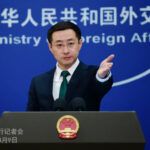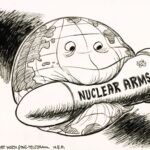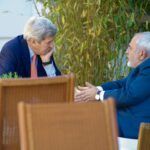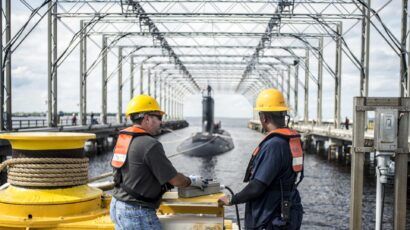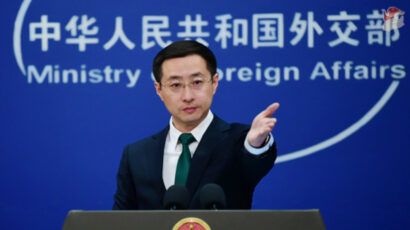The Black Sea: Center of the nuclear black market
By Maj. Gen. Bruce Lawlor (ret.) | December 15, 2011
The Black Sea region is one of the world’s critical crossroads, a strategic intersection of east — west and north — south corridors that enable the free flow of people, ideas, and goods from Asia to Europe and from former Soviet territory to the Middle East and Africa. It is also the center of the world’s nuclear black market.
The greatest potential sources of nuclear contraband are Russia, Pakistan, and countries that possess nuclear research reactors fueled by highly enriched uranium (HEU). With nearly 11,000 nuclear warheads, Russia owns the largest arsenal in the world and the most weapon-grade material. Countries occupying former Soviet space have about a third of the world’s HEU-fueled research reactors. Pakistan has 90 — 100 nuclear warheads, is building new plutonium-manufacturing capacity, and faces a dangerous and growing insider threat to its nuclear stockpiles.
The most pressing danger is not that terrorists will acquire a working atomic bomb in this region. Except for Pakistan, the security of nuclear warheads has improved. Nuclear weapons storage facilities are well guarded, and the chances of a terrorist group gaining access by force of arms are very small. The insider threat in Pakistan is kept in check somewhat by its nation-state status. It is not difficult to imagine what would happen if a nuclear warhead traceable to Pakistan were detonated in a Western city. The threat of retaliation is still effective there.
The real threat of nuclear terrorism stems from the world’s growing stockpiles of plutonium and HEU, both of which can be used to make crude atomic bombs. A recent US — Russian report catalogs nearly 2,000 metric tons of these materials, which are stored in hundreds of buildings in 30 countries under security conditions that range from “excellent to appalling.” The combination of fissile material and poor security greatly increases the probability that some of it will end up in terrorist hands.
Until recently, insiders who illicitly obtained fissile material were regularly arrested; they knew what to steal but not how to sell it. Over the past several years, however, organized crime groups in the Black Sea area appear to have become involved in nuclear smuggling. Their knowledge of smuggling tactics and poor coordination among local law enforcement agencies make it likely that—unless the United States significantly steps up its law enforcement efforts in the region—terrorists will eventually be able to buy enough fissile material to make at least a crude atomic device.
Harvard’s Project on Managing the Atom has published a comprehensive report on this threat, combining several well-known facts to create an unsettling picture. First, several terrorist groups, particularly Al Qaeda, have been trying to get their hands on a nuclear weapon for years. Osama bin Laden referred to it as a “religious duty” and embraced the idea of an American Hiroshima. Al Qaeda operatives have consulted with nuclear experts, tested conventional explosives for use in nuclear bombs, and attempted to purchase working nuclear devices. There is nothing to suggest that bin Laden’s death has ended this quest. Second, the Harvard study notes that if a sophisticated terrorist group acquired sufficient weapon-grade material, it would be able to build at least a crude, gun-type atomic bomb (WMD Commission, 2005). A nuclear device of this type wouldn’t be transported to the target by a sophisticated delivery system; its more likely delivery mode would be a rental truck. Third, although terrorist groups may not be able to manufacture the plutonium or weapon-grade uranium to make a crude bomb, it is not beyond their ability to buy or steal it. And fourth, nuclear smuggling is very difficult to combat. Globalization, huge profit margins, and organized crime have created a multibillion-dollar illicit-trafficking market that is producing ever more sophisticated methods of keeping contraband from being discovered. Nuclear contraband has become a part of that illicit market.
Two important databases that list illicit nuclear-trafficking incidents underscore the Black Sea region’s dark nuclear image. The International Atomic Energy Agency’s (IAEA) Illicit Trafficking Database reports incidents that have been confirmed by the governments of member states. The University of Salzburg’s Database on Nuclear Smuggling, Theft, and Orphan Radiation Sources lists incidents that have been the subject of investigation and verification by independent proliferation experts and academics. With just one exception, the reports of illicit nuclear trafficking in these two databases identify Russia as the known or suspected source of the contraband. They also identify Turkey as the preferred destination, because it is a place where willing sellers can find willing buyers. As Al Qaeda’s new leader, Ayman al-Zawahiri, told a Pakistani journalist several years ago: “[I]t is not difficult. If you have $30 million, you can go to the black market in Central Asia, make contact with a disgruntled Russian scientist, and get from him suitcase nuclear weapons.” The point is not whether suitcase nuclear weapons are to be had on the black market. The point is that Al Qaeda’s leadership pointed to the Black Sea region as the place to look. Against this backdrop, one chief concern has arisen: an emerging pattern of involvement by organized criminal groups in nuclear-trafficking cases.
The successful smuggling transaction has three essential components: a way to acquire contraband, the means of contacting potential buyers, and a mode of transporting the ill-gotten goods. In most known attempts to traffic in nuclear material, it was the employees of a country’s nuclear program who stole the nuclear material. In those cases, by and large, the theft was discovered precisely because those insiders were not experienced smugglers with networks of buyers and methods of moving the material across country borders.
A 2006 case in a former Soviet republic, however, illustrates that this pattern is changing. The case began in the expected manner: Georgian police heard of attempts to sell HEU and set up a sting, with police posing as buyers. But when the time for the transaction came, the Russian sellers did not attend, instead sending a courier with a sample. The “buyers” declined to purchase the material because it was unsuitable for building an atomic weapon, and the courier was later arrested.
There have been two other comparable incidents.
The full contents of this article are available in the November/December issue of the Bulletin of the Atomic Scientists and can be found here.
Together, we make the world safer.
The Bulletin elevates expert voices above the noise. But as an independent nonprofit organization, our operations depend on the support of readers like you. Help us continue to deliver quality journalism that holds leaders accountable. Your support of our work at any level is important. In return, we promise our coverage will be understandable, influential, vigilant, solution-oriented, and fair-minded. Together we can make a difference.
Topics: Nuclear Weapons, Opinion




